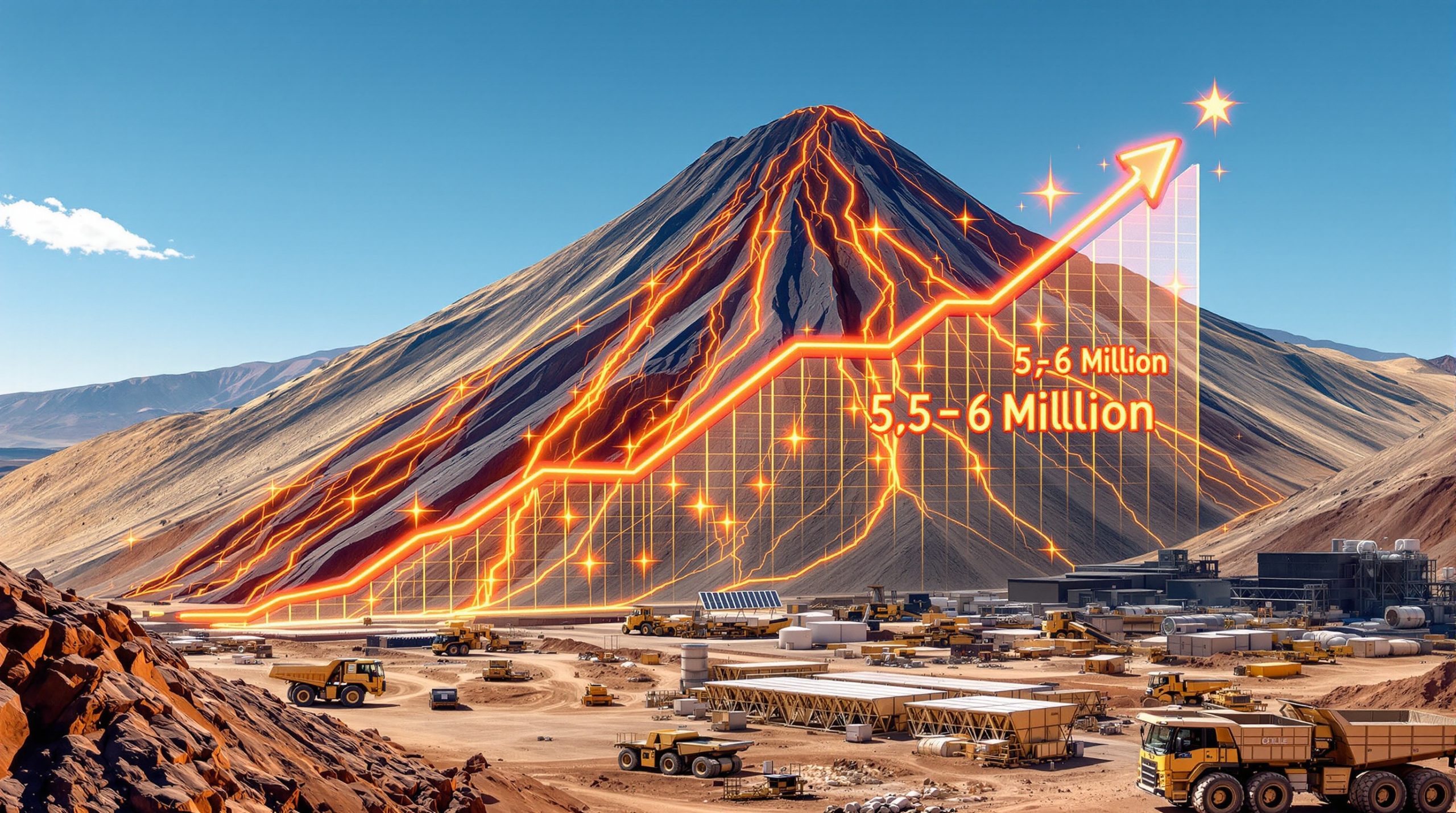Understanding the US-Ukraine Minerals Deal: Symbolism vs. Substance
The recently signed US-Ukraine minerals agreement represents a strategic geopolitical maneuver aimed at securing access to critical resources while reinforcing Ukraine's sovereignty. The deal establishes a jointly-owned Reconstruction Investment Fund targeting Ukraine's sub-soil resources, including oil, gas, lithium, uranium, titanium, and graphite. While symbolically significant, its practical implementation faces hurdles, including territorial conflicts, market volatility, and China's export restrictions in the sector.
The Framework of the Agreement
The agreement extends beyond rare earth elements to encompass all sub-soil resources, reflecting a broader strategy to align Ukraine's reconstruction with Western supply chain diversification goals. The fund's structure emphasizes long-term investment, with Ukrainian Deputy Prime Minister Yulia Svyrydenko stating that dividends are unlikely for at least a decade, underscoring the protracted timeline typical of mining projects.
This partnership represents not just financial cooperation but a strategic commitment by the US to invest in "a free, sovereign, and secure Ukraine" while securing potential access to minerals essential for modern technologies and green energy transition.
Timeline and Economic Expectations
The 10-year horizon for returns highlights the challenges of developing resources amid ongoing conflict. Existing production facilities, many shuttered since the war began, are excluded from the deal, necessitating Ukraine to rebuild mineral supply chains from scratch.
For context, graphite prices have collapsed by approximately 50%, forcing even established producers like Canada's Northern Graphite to halt operations, while China controls 70% of global graphite supply, enabling market manipulation. These dynamics underscore the need for government subsidies to shield nascent Ukrainian projects from price volatility.
Mining projects typically require 5-7 years to reach production even in stable regions, so the extended timeline reflects both conflict realities and industry norms. The focus on long-term strategic positioning rather than immediate economic returns illustrates the deal's true nature as an investment in future geopolitical investor strategies.
Why Are These Minerals Important?
Strategic Value of Critical Minerals
Lithium, uranium, titanium, and graphite are pivotal for renewable energy, defense, and technology sectors. Lithium is essential for electric vehicle batteries, uranium for nuclear energy, titanium for aerospace applications, and graphite for battery anodes.
The US aims to reduce reliance on China, which processes 70% of the world's graphite and dominates rare earth refining. Meanwhile, Russia supplies 27% of enriched uranium to US commercial reactors, complicating efforts to isolate Moscow economically.
These minerals represent the foundation of the clean energy transition, with demand projected to increase dramatically:
- Lithium: Demand expected to increase by 500% by 2050
- Graphite: Required for nearly all lithium-ion battery anodes
- Titanium: Essential for aerospace, defense, and medical applications
- Uranium: Critical for zero-carbon nuclear energy generation
Ukraine's Resource Potential
Ukraine's Balakhivske graphite project, currently in feasibility studies, exemplifies its potential. The country holds several promising mineral deposits that have been underexplored since Soviet times.
However, the Novopoltavske rare earth field, last surveyed in 1982-1991, lies in contested Zaporizhzhia province, illustrating the geopolitical risks. While Ukraine's lithium deposits are promising, those in occupied territories remain inaccessible, limiting immediate gains.
Ukraine's mineral wealth includes:
- Significant lithium deposits in both free and occupied territories
- Uranium reserves that once supported the Soviet nuclear program
- High-grade titanium deposits with aerospace potential
- Graphite resources with battery-grade potential
Challenges Facing the Deal
Territorial Occupation Constraints
The occupation of resource-rich regions severely limits Ukraine's capacity to leverage its mineral wealth. According to Ukrainian think tanks We Build Ukraine and the National Institute of Strategic Studies, approximately 40% of Ukraine's metal resources currently remain under Russian occupation.
This includes two significant lithium projects and the Novopoltavske rare earth field, both of which are located in contested areas. Recovering these areas is contingent on a resolution to the conflict, which remains uncertain.
The territorial challenges create a complex situation where the deal's ultimate success depends on geopolitical outcomes that neither the US nor Ukraine can fully control.
Processing and Supply Chain Hurdles
Building processing infrastructure represents perhaps the greatest challenge. Rare earth separation, uranium enrichment, and titanium alloy production require specialized technology currently dominated by China and Russia.
For instance, titanium ore must be refined into aviation-grade material, a process where Russia excels. The US Department of Defense's partnership with Australia's Lynas Rare Earths to develop domestic processing exemplifies the strategic investments needed.
The processing challenges include:
- Developing specialized metallurgical facilities
- Training technical workforce in advanced refining techniques
- Creating transportation and logistics networks
- Building environmental safeguards for processing operations
- Securing energy supplies for energy-intensive refining processes
Market Price Vulnerabilities
Price fluctuations threaten long-term viability of new mining operations. Lithium prices have plummeted due to Chinese overproduction, while graphite's 50% decline highlights market instability.
Government intervention, akin to US support for Lynas, may be necessary to sustain Ukrainian projects through market downturns. Without such support, private investment will likely remain hesitant given the combination of geopolitical and market risks.
"In the current environment, critical minerals projects increasingly need government backing to shield them from price volatility driven by dominant market players," notes mining analyst Andy Home. "The economics simply don't work otherwise."
Global Mineral Politics and the US Strategy
The New Geopolitical Currency
Critical minerals have emerged as a new form of geopolitical currency, with nations vying for control over resources essential to the energy transition and defense technologies. What was once primarily an economic consideration has transformed into a matter of national security.
The minerals deal reflects a growing understanding that controlling supply chains for these resources provides significant leverage in international relations, similar to how oil shaped 20th century geopolitics.
Countering Chinese Dominance
The deal aligns with US efforts to forge alternatives to Chinese-dominated supply chains. Similar agreements, such as potential minerals-for-security deals with the Democratic Republic of Congo, reflect a broader pattern of resource diplomacy.
The United States is actively working to reduce Chinese influence in critical mineral supply chains through:
- Direct investment in strategic projects worldwide
- Development of domestic processing capabilities
- Creation of friendly-nation supply networks
- Minerals diplomacy with resource-rich countries
Symbolic vs. Practical Outcomes
While the deal reinforces US-Ukraine ties, its success hinges on peace and infrastructure investment. Without territorial resolution, 40% of resources remain untapped, and processing capabilities may take decades to mature.
The agreement's most immediate value may be diplomatic rather than economic—signaling ongoing US commitment to Ukraine's sovereignty and reconstruction. The minerals aspect provides an economic rationale for continued engagement beyond the current conflict.
Implications for Global Mineral Markets
Reshaping Supply Chains
Western nations are prioritizing direct investment and bilateral agreements to bypass China. The US emphasis on domestic processing, as seen in the Lynas partnership for rare earths, mirrors this strategy.
This represents a fundamental shift from market-based resource acquisition to strategic governmental intervention, with implications for global commodity insights and pricing mechanisms.
The reshaping effort includes:
- Development of processing facilities outside China
- Creation of friendly-nation supply networks
- Implementation of stockpiling programs
- Investment in recycling technologies
- Support for exploration in politically stable regions
Market Competition Challenges
New entrants face steep barriers to market entry. China's pricing power and Russia's significant market share complicate dynamics. Private sector participation will require guarantees against volatility, likely necessitating federal backing.
The economics of critical minerals projects are challenging even in stable regions, with the Ukraine situation adding additional complexity:
| Mineral | Challenge | Strategic Importance |
|---|---|---|
| Graphite | 50% price drop, Chinese dominance | Essential for EV battery anodes |
| Lithium | Price volatility, processing expertise | Key for energy storage |
| Titanium | Russian processing dominance | Crucial for aerospace, defense |
| Uranium | Russian supply chain control | Nuclear energy security |
Investment Implications
The deal highlights several realities for critical minerals markets, particularly the growing importance of government intervention. With China able to control prices through production adjustments and processing dominance, purely private ventures face significant risks.
Direct federal action, like the US Department of Defense's investment in rare earths processing with Australia's Lynas, will become more common as nations pursue supply chain security over pure market efficiency.
Disclaimer: The development of Ukrainian mineral resources faces significant uncertainties related to the ongoing conflict, territorial control, and market conditions. The timeline for economic returns remains speculative and dependent on numerous factors beyond commercial control.
Looking Beyond the Headlines
Resource Quality Considerations
While Ukraine possesses mineral deposits, their quality, concentration, and economic viability remain uncertain in many cases. Soviet-era surveys may not meet modern standards, and additional exploration is necessary to confirm resource estimates.
The grade and accessibility of Ukrainian deposits will ultimately determine their competitiveness against established global producers, regardless of geopolitical considerations.
Environmental and Social Governance
Modern mining operations face rigorous environmental and social standards that weren't considerations during Soviet resource development. Building sustainable operations that meet Western ESG requirements adds complexity and cost to Ukrainian mineral projects.
Addressing environmental concerns, community impacts, and governance transparency will be essential for attracting reputable international partners beyond government-backed initiatives.
Technology Transfer Needs
Ukraine will require significant technology transfer to develop modern mining and processing capabilities. This includes exploration technologies, extraction methods, processing techniques, and environmental management systems.
The deal's long-term success may depend on education and training programs to develop domestic expertise in modern resource development practices. Meanwhile, efforts to address mineral shortages insights will be crucial for the broader clean energy transition.
Conclusion
The US-Ukraine minerals deal symbolizes a strategic shift toward resource security but faces formidable obstacles. Territorial disputes, technological gaps, and market instability demand sustained investment and geopolitical stability.
As the "great global minerals game" intensifies, similar agreements will likely emerge, reshaping global resource politics in the renewable energy era. The deal's true test will be whether it can evolve from symbolic commitment to substantive economic partnership despite the multifaceted challenges ahead.
For Ukraine, the minerals agreement offers a vision of post-war economic development leveraging natural resources. For the United States, it represents one move in a broader strategy to secure critical supply chains while supporting a strategic partner. Whether these aligned interests can overcome the substantive obstacles remains the key question surrounding this ambitious but challenging partnership, especially in light of shifting uranium market dynamics and energy security concerns.
Want to Identify the Next Major ASX Mining Discovery?
Gain an immediate market edge with Discovery Alert's proprietary Discovery IQ model that provides instant alerts on significant ASX mineral discoveries as they happen, turning complex geological data into actionable investment insights. Explore how historic discoveries have generated substantial returns by visiting Discovery Alert's dedicated discoveries page and position yourself ahead of the market.




